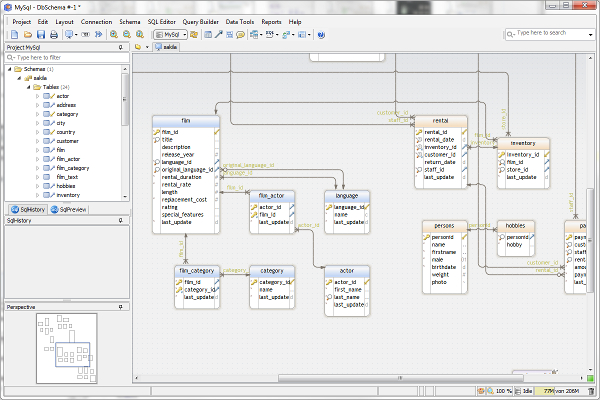

To access these wizards from the object browser context menu, right-click a table, and then select Table Data Export Wizard or Table Data Import Wizard. The import action includes table, column, and type mapping. You can run each wizard against local or remotely connected MySQL servers. The wizards include several configuration options, such as separators, column selection, and encoding selection. The table data wizards support import and export operations by using CSV and JSON files. Run the table data export and import wizards from the object browser context menu If you use to connect, the connection will fail.
For MySQL Single Server, make sure that the user name is in the format. If you're adding a connection to MySQL Single Server or Flexible Server on MySQL Workbench, do the following: There are two ways to export and import data in MySQL Workbench: from the object browser context menu or from the Navigator pane. 
Import and export data by using MySQL Workbench
Use partitioned tables when appropriate. Avoid too much parallelism that would cause you to hit a resource limit, and monitor resources by using the metrics available in the Azure portal. Enable the constraints and verify the data after the load to ensure referential integrity. Disabling foreign key checks provides significant performance gains. Disable foreign key constraints before you load the data. Delay the creation of secondary indexes until after the data is loaded. Create clustered indexes and primary keys before you load data. Performance recommendations for import and exportįor optimal data import and export performance, we recommend that you do the following: INSERT INTO innodb_table SELECT * FROM myisam_table ORDER BY primary_key_columns Use the clause ENGINE=INNODB to set the engine for creating a table, and then transfer the data into the compatible table before the migration. For example, if you have a WordPress or web app that uses the MyISAM engine, first convert the tables by migrating the data into InnoDB tables. If your source database uses another storage engine, convert to the InnoDB engine before you migrate the database. Make sure that all tables in the database use the InnoDB storage engine when you're loading data into your Azure database for MySQL. When you're migrating data from external data sources other than a MySQL database, create flat files and import them by using mysqlimport.īoth Single Server and Flexible Server support only the InnoDB storage engine. Include constraints (primary key, foreign key, and indexes), views, functions, procedures, triggers, and any other database objects that you want to migrate. When you're moving database objects other than tables, explicitly create those objects. For example, use the -include-tables or -exclude-tables switch with mysqlpump, and the -tables switch with mysqldump. By doing so, you can omit any unneeded tables from the migration to save time and resources. 
When you need to selectively choose a few tables to import from an existing MySQL database into your Azure MySQL database, it's best to use the import and export technique.For other tools, go to the "Migration Methods" section (page 22) of the MySQL to Azure Database migration guide.

In the following scenarios, use MySQL tools to import and export databases into your MySQL database. In the Azure portal, look for the connection information on the Overview pane of your Azure Database for MySQL.Īdd the connection information to MySQL Workbench.ĭetermine when to use import and export techniquesįor scenarios where you want to dump and restore the entire database, use the dump and restore approach instead. The database can have the same name as the database that contains the dumped data, or you can create a database with a different name.
#Restore data from .dbs file dbschema install#
Download and install MySQL Workbench or another third-party MySQL tool for importing and exporting.Ĭreate a database on the Azure Database for MySQL serverĬreate an empty database on the Azure Database for MySQL server by using MySQL Workbench, Toad, or Navicat.Create an Azure Database for MySQL server by using the Azure portal.Prerequisitesīefore you begin migrating your MySQL database, you need to: This article explains two common approaches to importing and exporting data to an Azure Database for MySQL server by using MySQL Workbench.įor detailed and comprehensive migration guidance, see the migration guide resources.įor other migration scenarios, see the Database Migration Guide.








 0 kommentar(er)
0 kommentar(er)
